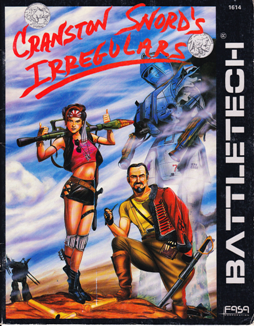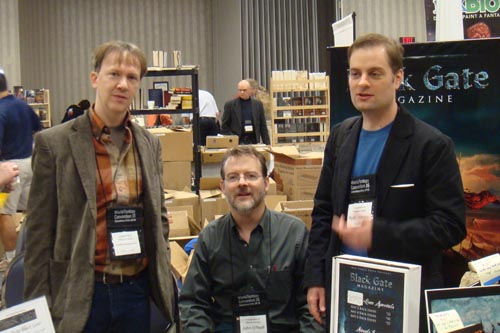Gods and Monsters
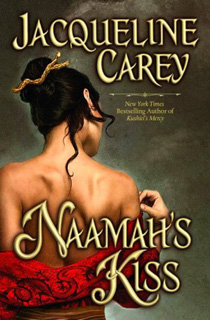 Jacqueline Carey’s third Terre d’Ange trilogy, the Moirin books, seem to be in general better liked than the books about Imriel. I can’t agree with this opinion. It might be because I read them first, and therefore had gone pretty far into Naamah’s Kiss before I got a satisfactory translation of “diadh-anam“. From context, I was forced to conclude that “”diadh-anam” was Cruithne for “plot”. As in “Jehanne, I adore you, but I find that the plot is telling me I must go to China.”
Jacqueline Carey’s third Terre d’Ange trilogy, the Moirin books, seem to be in general better liked than the books about Imriel. I can’t agree with this opinion. It might be because I read them first, and therefore had gone pretty far into Naamah’s Kiss before I got a satisfactory translation of “diadh-anam“. From context, I was forced to conclude that “”diadh-anam” was Cruithne for “plot”. As in “Jehanne, I adore you, but I find that the plot is telling me I must go to China.”
Of course all the main characters in the Terre d’Ange books have been a singularly god-ridden bunch. However, Phèdre and Imriel and their cohorts had to deal more with powers and inclinations that they received from their gods in much the same way that other heroes have received them from radioactive spiders. The actions they take are to help friends, or make bargains with enemies, or act for their country, or earn a living, or do stupid things because of lust or youth or stupidity.
Moirin, on the other hand, has a goddess that micromanages her every action. Go to Terre d’Ange. Date a hot magician. Learn tai chi. Etc., etc. The Maghuin Dhonn winds up being a character as present in the book as poor, sexy, silly Moirin herself, only a lot less interesting. It’s the Q problem. How do you use a god among mortals as a character? Alan Moore did it with Dr. Manhattan, but that worked because he let us into Dr. Manhattan’s brain, showed us what the world looked like to him. But all you ever see of the Maghuin Dhonn is just her moving her favorite character around like a chess piece; and why would you ever want to read a book about the adventures of a chess piece, when you could read about the mind behind the chess game?
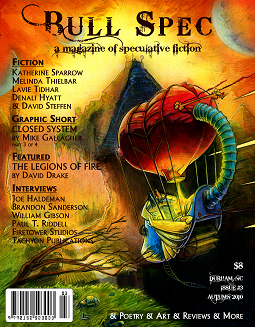 While other magazines are dying (and then, a la
While other magazines are dying (and then, a la 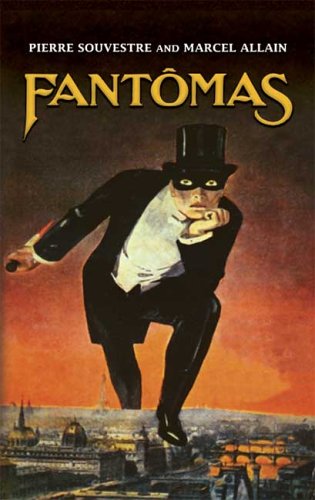
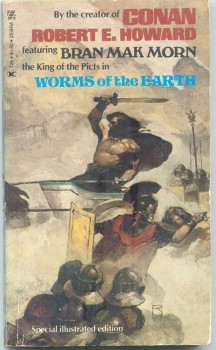 “Worms of the earth, back into your holes and burrows! Ye foul the air and leave on the clean earth the slime of the serpents ye have become! Gonar was right—there are shapes too foul to use even against Rome!”
“Worms of the earth, back into your holes and burrows! Ye foul the air and leave on the clean earth the slime of the serpents ye have become! Gonar was right—there are shapes too foul to use even against Rome!” Today is Veterans Day. For our readers and contributors in the United States, today is a federal holiday (no mail!).
Today is Veterans Day. For our readers and contributors in the United States, today is a federal holiday (no mail!). I believe everyone has something that unnerves them, which is not in your typical things-that-are-scary category. We’ve already agreed that clowns and little kids with blank stares rank high on the creepy index, but there are other more benign items that cause the hair on the back of our necks to stand up, mainly because they exist on the outside of the everyday.
I believe everyone has something that unnerves them, which is not in your typical things-that-are-scary category. We’ve already agreed that clowns and little kids with blank stares rank high on the creepy index, but there are other more benign items that cause the hair on the back of our necks to stand up, mainly because they exist on the outside of the everyday.